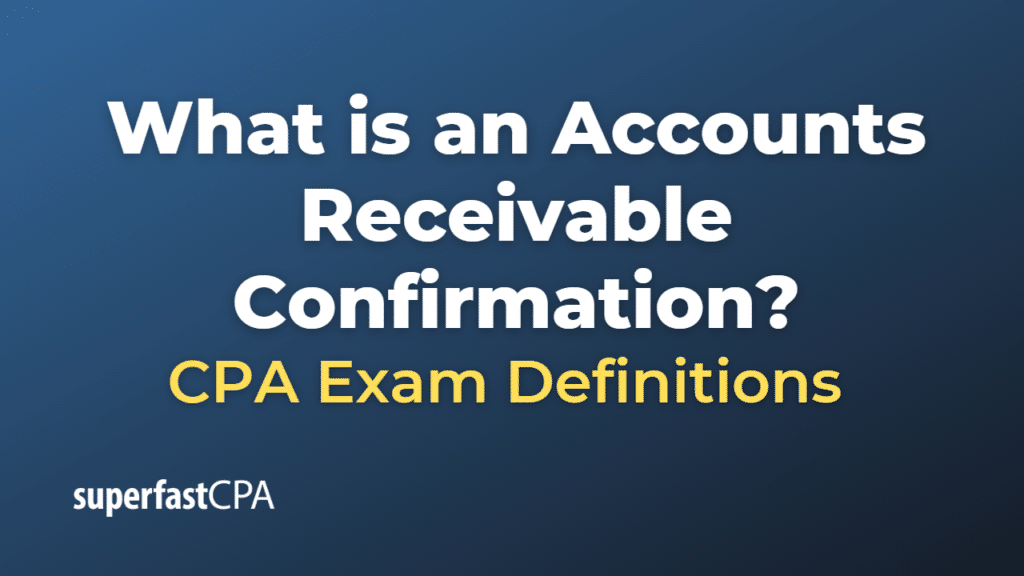Accounts Receivable Confirmation
An accounts receivable confirmation is an audit procedure used to verify the accuracy and validity of a company’s accounts receivable balances by obtaining direct confirmation from customers. During an accounts receivable confirmation, the auditor sends a letter, email, or another form of communication to the company’s customers, requesting them to confirm the outstanding balance they owe to the company as of a specific date. This procedure helps the auditor to identify any discrepancies, errors, misstatements, or potential fraud in the accounts receivable reported by the company.
There are two primary types of accounts receivable confirmations:
- Positive confirmation: This type of confirmation requires the customer to respond to the auditor, whether or not they agree with the stated outstanding balance. If the customer disagrees with the balance or fails to respond, the auditor will perform additional audit procedures to investigate and resolve the discrepancy.
- Negative confirmation: This type of confirmation assumes the customer agrees with the outstanding balance unless they respond to the auditor to indicate otherwise. Negative confirmations are generally used when the risk of material misstatement is low, or when the company has a large number of small-balance accounts receivable.
Accounts receivable confirmations are an essential part of the audit process, as they provide evidence to support the accuracy of the company’s financial statements. By obtaining direct confirmation from customers, auditors can assess the validity of the reported accounts receivable balances, helping to build trust in the company’s financial reporting and maintain its overall financial health.
Example of an Accounts Receivable Confirmation
Let’s consider a fictional company called “GourmetBakery,” which sells high-quality baked goods to various cafes and restaurants on credit. GourmetBakery’s management has engaged an audit firm to perform a financial statement audit, including an accounts receivable confirmation.
Here’s a simplified example of the steps the audit firm might take during the accounts receivable confirmation process:
- Select a sample of customers: The auditor selects a sample of GourmetBakery’s customers from the accounts receivable listing. The sample may include both large and small balances and may be chosen based on the auditor’s assessment of risk factors.
- Prepare and send confirmation requests: The auditor prepares positive or negative confirmation requests, depending on the assessed risk and materiality of the accounts receivable balances. The confirmation requests include the customer’s name, outstanding balance as per GourmetBakery’s records, and a specific date for which the balance is being confirmed.
For example, the confirmation request might state: “As of December 31, 20XX, our records indicate that you owe GourmetBakery $5,000. Please confirm if this information is correct, or provide the correct outstanding balance.”
- Monitor and follow up on responses: The auditor tracks the responses received from the customers, compares them with GourmetBakery’s records, and follows up on any discrepancies or non-responses.
- Investigate and resolve discrepancies: If a customer disagrees with the outstanding balance, the auditor investigates the discrepancy by reviewing invoices, credit memos, payment records, and other relevant documentation. The auditor may also communicate with GourmetBakery’s management and the customer to resolve the issue.
- Document and report the findings: After completing the accounts receivable confirmation process, the auditor documents the results and includes any significant findings or discrepancies in the audit report.
By conducting an accounts receivable confirmation, the auditor can obtain direct evidence from customers to verify the accuracy and validity of GourmetBakery’s reported accounts receivable balances. This helps build trust in the company’s financial reporting and contributes to maintaining GourmetBakery’s overall financial health.













